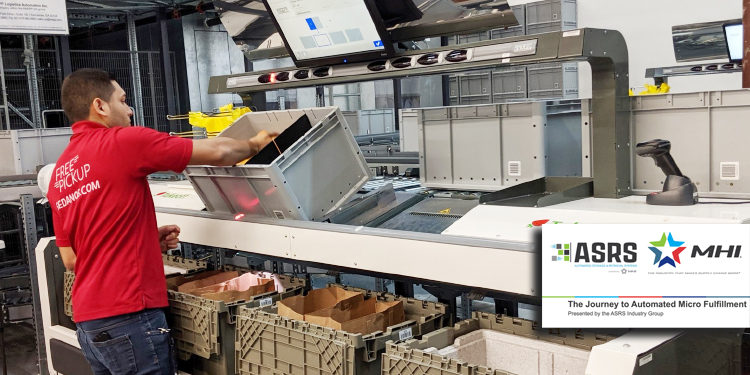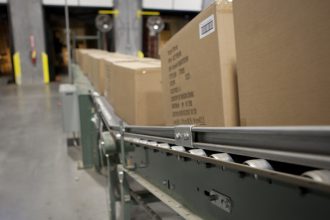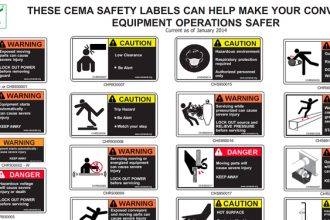Lessons From Operations That Implemented An Automated Micro Fulfillment System

In the previous post, highlighting “The Journey to Automated Micro Fulfillment” webinar presented by the Automated Storage and Retrieval Systems Industry Group of MHI, the key considerations for developing a strategy to deploy automated storage and retrieval systems (ASRS) in retail stores were explored. With the explosion of online shopping during the spring 2020 onset of the COVID-19 pandemic, retailers struggled to keep up with the rapid spike in consumer demand for click-and-collect and direct delivery services. As a result, more retailers — particularly grocers — are considering implementing such systems to better respond to the subsequent inventory availability, floor space, and turnaround time challenges.
This, the second of two parts, reviews lessons learned from other retailers who have implemented automated micro fulfillment systems in terms of design, requests-for-proposal (RFPs), and installation. Recommendations included:
- Determine how an in-store micro fulfillment strategy will impact an entire end-to-end supply chain, from warehouse fulfillment, to store replenishment, to customer experience. With more consumers using e-commerce offerings for click-and-collect or direct delivery from their closest retail outlet, it is important to ensure that the entire supply chain can support the stocking needs of each store based on the population density, demographics, and percentage of local online shoppers.
- Be realistic about implementation timeframes. While nearly 70% of micro fulfillment installations encounter no issues that might impact a schedule, 30% do — and such delays can translate into a loss of customers to the competition. The most frequent holdups have been caused by building height limitations, a floor slab’s ability to hold the structural load of the system, and fire suppression requirements that vary by municipality.
- Explain the benefits of the system to the current workforce. Grocery operations in particular tend to have organized labor, and there is often a perception that adding automation into a process will eliminate jobs. Instead, it’s important to detail the productivity gains that the system will create by helping workers better serve customers, thereby making their jobs even more important. For example, systems that utilize robotics for third shift picking pre-pick and stage more than half of the orders before staff arrives in the morning saves employees time in completing picks. Further, nearly all retail outlets with a micro fulfillment ASRS implementation report that staffers have been extremely enthusiastic about the chance to engage with automation.
- If a retailer does not have the internal bandwidth to determine the optimal system size, appropriate throughput rates, and best types of inventory profiles to be stored within the automation, consider working with a third party — including ASRS vendors with experience in micro fulfillment projects.
- Consider future growth. While many operations don’t anticipate using their system around the clock, once it is installed most retailers quickly see the benefit of pre-picking partial orders during third shift for completion once employees clock in. That expanded usage will necessitate more frequent replenishment, or expansion of the system’s capacity to accommodate the associated growth in inventory. Discuss potential expansion plans with the system designer or vendor during the design phase to ensure there is adequate space within the facility and that the technology can flex to meet the needs of customers going forward.
For more information about how an automated micro fulfillment system might benefit your retail operations, contact the members of the Automated Storage and Retrieval Systems Industry Group.



